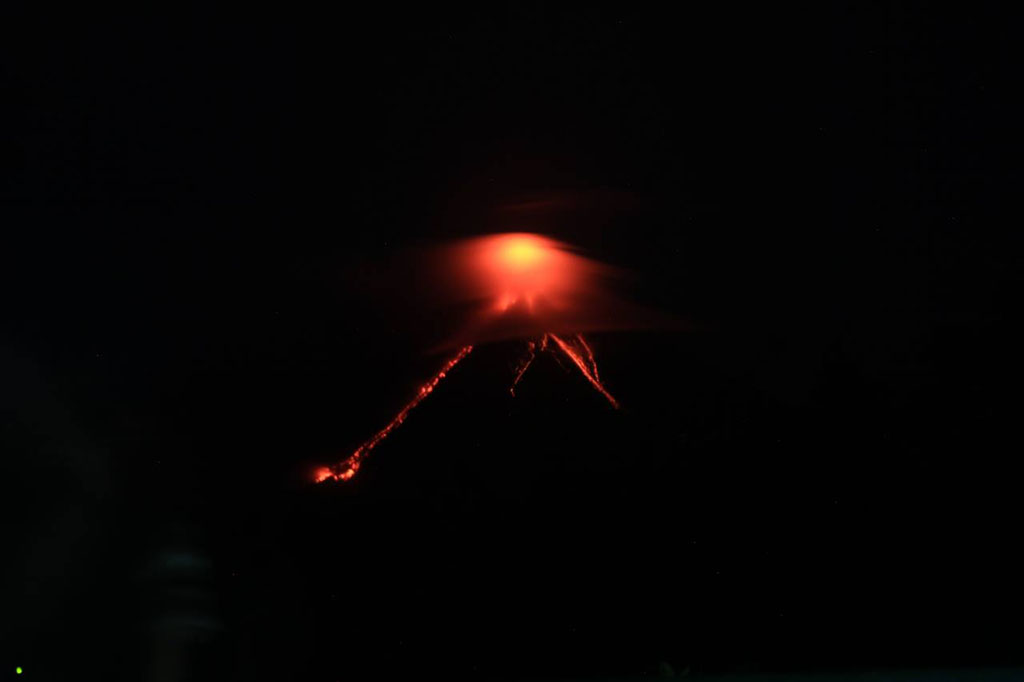Thousands flee as lava flows down Mayon Volcano
Hold off any visits you may have to the province of Albay as Mayon Volcano, the country’s most active volcano, threatens to blow its top.
 LAVA FLOW FROM MAYON summit as seen on January 15, 2018 from the Mayon Volcano Observatory – Lignon Hill./IMAGE PHILVOLCS
LAVA FLOW FROM MAYON summit as seen on January 15, 2018 from the Mayon Volcano Observatory – Lignon Hill./IMAGE PHILVOLCS
In a report published by the Philippine Daily Inquirer, at least 15,000 have been evacuated from the towns of Camalig, Guinobatan, Malilipot, Tabaco, and Ligao. Discussions are also underway to place the province of Albay under a state of calamity because of Mayon Volcano’s alert status.
 Mayon Pyroclastic Flow as seen from the Mayon Volcano Observatory at Lignon Hill last January 15, 2018 at 9:41 pm./IMAGE PHILVOLCS
Mayon Pyroclastic Flow as seen from the Mayon Volcano Observatory at Lignon Hill last January 15, 2018 at 9:41 pm./IMAGE PHILVOLCS
The Philippine Institute of Volcanology and Seismology (PHILVOLCS) has raised the alert level of Mayon to level 3 or having an increased tendency towards eruption. This means magma is already close to the crater and it may cause Mayon to erupt if it continues to exhibit.
Pyroclastic density current event 1/16/18 0758
Pyroclastic density current or "uson" on the Miisi Gully generated by lava collapse at 0758H.
Philippine Institute of Volcanology and Seismology (PHIVOLCS-DOST)さんの投稿 2018年1月15日(月)
PYROCLASTIC DENSITY CURRENT AT MAYON. This was the most recent observed event at Mayon Volcano at 7:58 am today./VIDEO PHILVOLCS
In their bulletin issued at 8 am today, PHILVOLCS advised the public to stay away from the 6-kilometer Permanent Danger Zone (PDZ) and the 7-kilometer Extended Danger Zone (EDZ) towards the south of the volcano “due to the danger of rockfalls, landslides and sudden explosions or dome collapse that may generate hazardous volcanic flows.”
“Civil aviation authorities must also advise pilots to avoid flying close to the volcano’s summit as ash from any sudden eruption can be hazardous to aircraft,” the agency added.
Source: Inquirer.net, SunStar Manila, PHILVOLCS, UNTV
Image source: Philippine Institute of Volcanology and Seismology (PHIVOLCS-DOST) on Facebook













